Chesterfield formerly had three railway stations in or adjacent to the town centre. But it didn’t end there, as a further seven were contained within what would now be Chesterfield borough. In this blog – a version of which first appeared in the Derbyshire Times – we take a brief look at these stations.
Stations weren’t just closed in the so-called Beeching era of British Railways (the 1960s under a plan developed by the then Chairman). Some were surprisingly early losses as competing company lines were closed. In Chesterfield borough, for example, the lines of three formerly competing companies once served the town – the Midland Railway, Great Central Railway and the Lancashire, Derbyshire and East Coast Railway. Of these only the former Midland station is still in business – at the bottom of Corporation Street. All the other railway stations in today’s borough have closed.
Station names can change, but we’ve used those that most people might remember. The closure dates we give here relate to passenger services. It’s worth remembering that some stations retained a goods service after they closed to passengers.
Chesterfield Midland Station – open but reconstructed.
Chesterfield’s remaining railway station, at the bottom of Corporation Street and on the NE/SW and London route, is the town’s earliest.
It was first opened in 1840 as part of the North Midland Railway’s Derby to Leeds line. Construction of this line brought George Stephenson to live at Tapton House, not far away from the railway station, where he died in 1848. Stephenson was the engineer in chief of the line (with his son Robert). George was regarded as the so-called ‘father of the railways’ and is commemorated by a statue outside the station by Stephen Hickling which was unveiled in 2005. It was, though, Stephenson’s understudy Frederick Swanwick who took most of the decisions during the line’s construction. George Stephenson is buried in nearby Trinity Church.
In 1844 the North Midland Railway amalgamated with three other companies to form the Midland Railway. A ‘grouping’ of railways in 1923 resulted in the Midland becoming part of the London Midland and Scottish Railway, until nationalised in 1948.
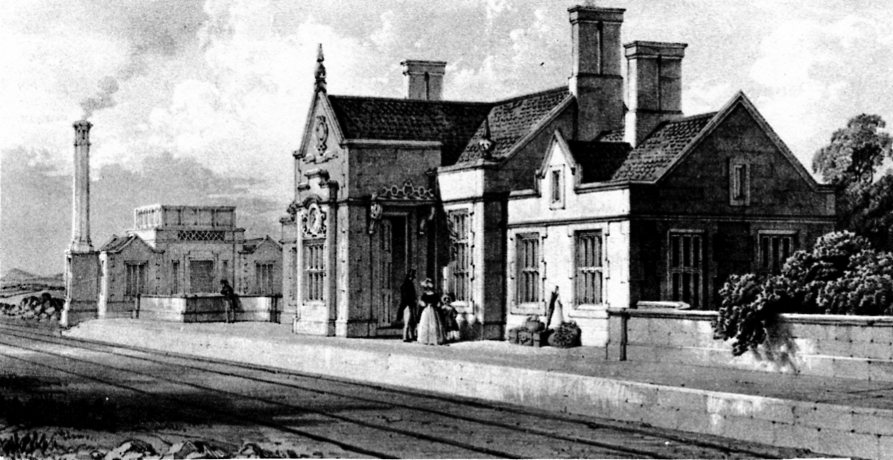
It appears that North Midland House – the isolated property which has the station car park behind it – was been built out of repurposed masonry fragments from Francis Thomson’s original station building. These appear to have been salvaged when a new station was constructed in the late 1860s to early 1870, about 200 yards north of the first building, to accommodate the opening of the current direct line to Sheffield (opened in 1870). Until that time passengers for the city had to travel to Rotherham Masborough and catch a local train from there to Sheffield.
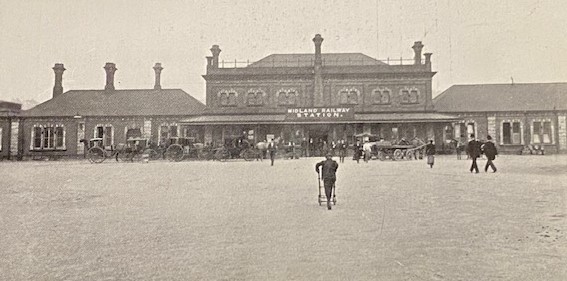
The 1870 station was rebuilt in the early 1960s (in stages). This building was itself replaced in 2000 by the present structure. Throughout the various rebuildings the 1870s station platform canopies have been retained albeit altered at some stage – they appear to have less glazing in them than their original configuration. The outer edges of the canopies were re-clad in 2023, to a similar design as that existing.
There were once extensive goods yards and sidings nearby (the site of the present car park), which included a brick built and a wooden built goods shed and stables for horses.
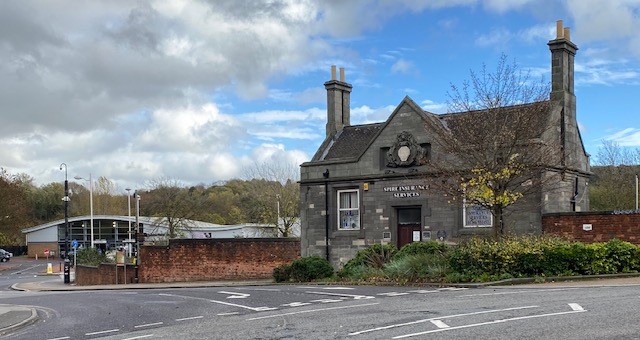
Chesterfield Market Place Station (closed and demolished)
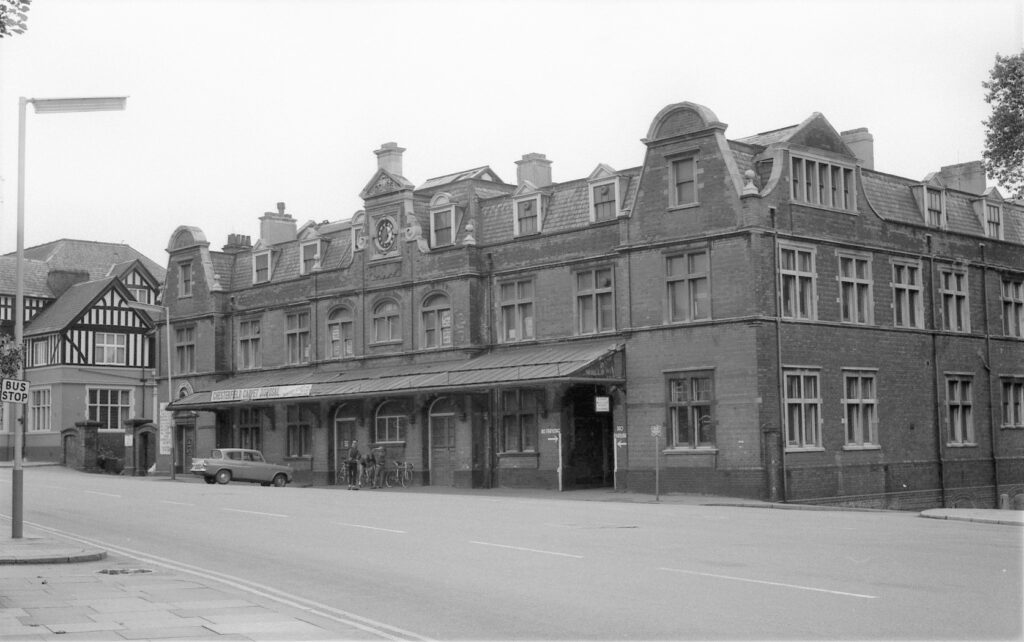
The Lancashire, Derbyshire and East Coast Railway’s Market Place Station (next to the Portland Hotel) was opened in 1897 and closed to passengers in 1951 (though a sparse goods service continued until spring 1957). After some years as a paint and carpet warehouse it was sadly demolished in 1973.
Though it was planned to, the railway never reached Lancashire nor the East Coast. It was taken over by the Great Central Railway (GCR) in 1907, became part of the London and North Eastern Railway in 1923 (when the railways were grouped into four big companies) and was part of British Railway’s (BR) Eastern Region from nationalisation in 1948.
From here you could catch trains to Lincoln, Mansfield and stations in between (for example Arkwright, Bolsover, etc.), though the service was always sparse.
The line was carried into the Market Place station via major engineering works. Most noteworthy was a viaduct at Horns Bridge, which towered above the area, including the Midland Railway and the Great Central Railway lines, which all crossed in this area. A very small remnant of this brick and iron lattice-work viaduct can been seen today, in the form of a blue-brick pillar backing on to the Midland Railway line at the Horn’s Bridge A61/A617 roundabout.
For more about the probable architect of this station – Cole Adams – see our blog here.
An extensive goods shed and yard was near the station. In the line’s early years, a small steam locomotive engine shed was also situated nearby. The station and goods yard hosted an, at one time, well-remembered centenary death of George Stephenson railway exhibition in 1948. The goods yard, on West Bars, later formed the home of Arnold Laver timber merchants.
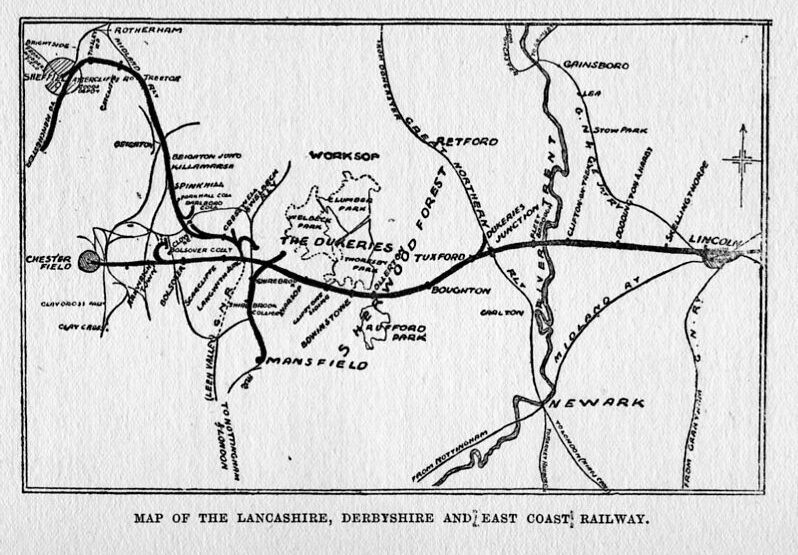
Chesterfield Central Station (closed and demolished)

Another demolished station was the Manchester, Sheffield and Lincolnshire Railway’s (later GCR) buildings on Infirmary Road. Its site is now covered by the inner relief road – officially known as ‘Great Central Way’ – which opened in 1985.
The station was built as part of a branch off the company’s then new ‘Derbyshire Lines’ Beighton to Annesley extension. Work on making the line into a loop had started while the branch to Chesterfield Central was still being built. This involved construction of a tunnel through Chesterfield, part of which still remains. The original constructing company – the Manchester, Sheffield and Lincolnshire Railway – then built a new mainline to London Marylebone. The company changed its name in 1897 to the Great Central Railway, anticipating the opening (in 1899) of this new line. What became the ‘Chesterfield Loop’ departed the mainline just south of Staveley Central Station, re-joining it again near Heath.
Having opened in 1892, the station passed into LNER hands in 1923, then into BR’s Eastern Region in 1948. It closed in early March 1963.
Like other stations on the Chesterfield Loop, passenger services were mainly local – to/from Nottingham Victoria and Sheffield Victoria. A very limited number of expresses did call at the Chesterfield station at varying periods during its existence.
An extensive brick-built goods shed and sidings were nearby.
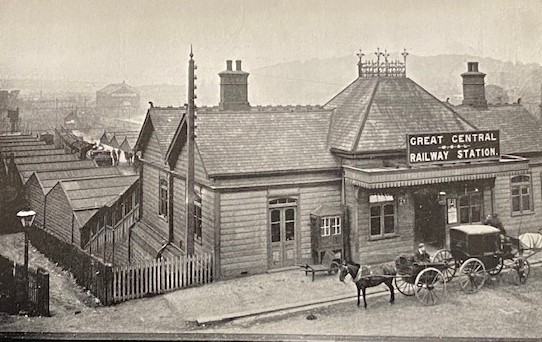

Sheepbridge and Brimington Station (closed and demolished)
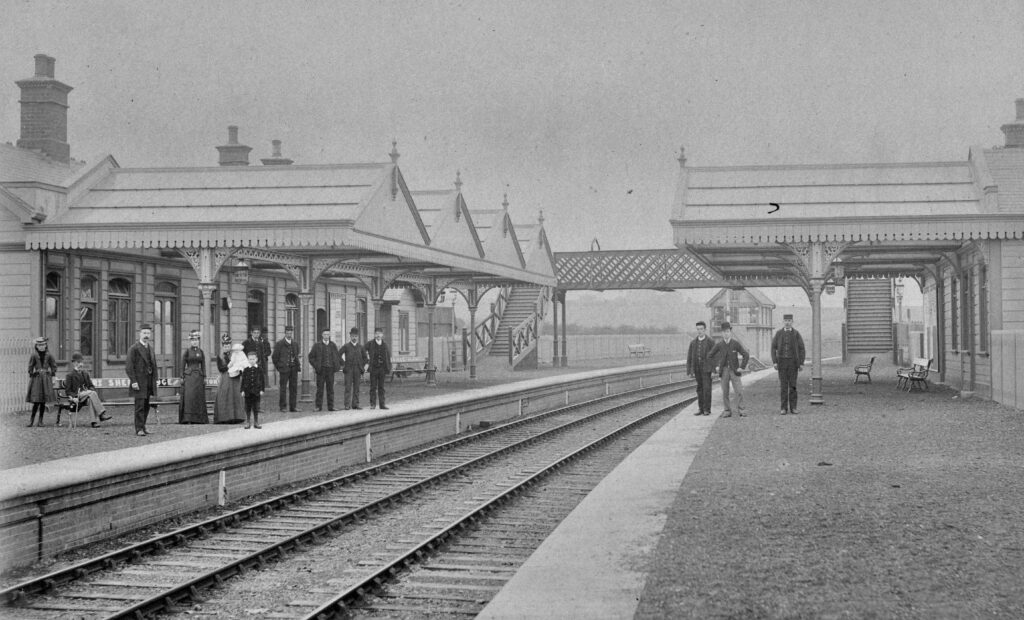

The next station on the GCR’s Chesterfield Loop towards Staveley was Sheepbridge and Brimington, at the bottom of Wheeldon Mill. Its site is now mainly occupied by a haulage business – though the former station master’s house still survives.
Like that at Chesterfield, stations on this part of the GCR were of wooden construction and were lauded by railway historian Gordon Biddle as being amongst the best of their type.
This station opened in June 1892 and closed in early 1956. The platform buildings on the left in our photograph had survived, albeit minus their canopies, until April 2010, when they were destroyed by fire.
Staveley Works for Barrow Hill Station (closed and demolished)
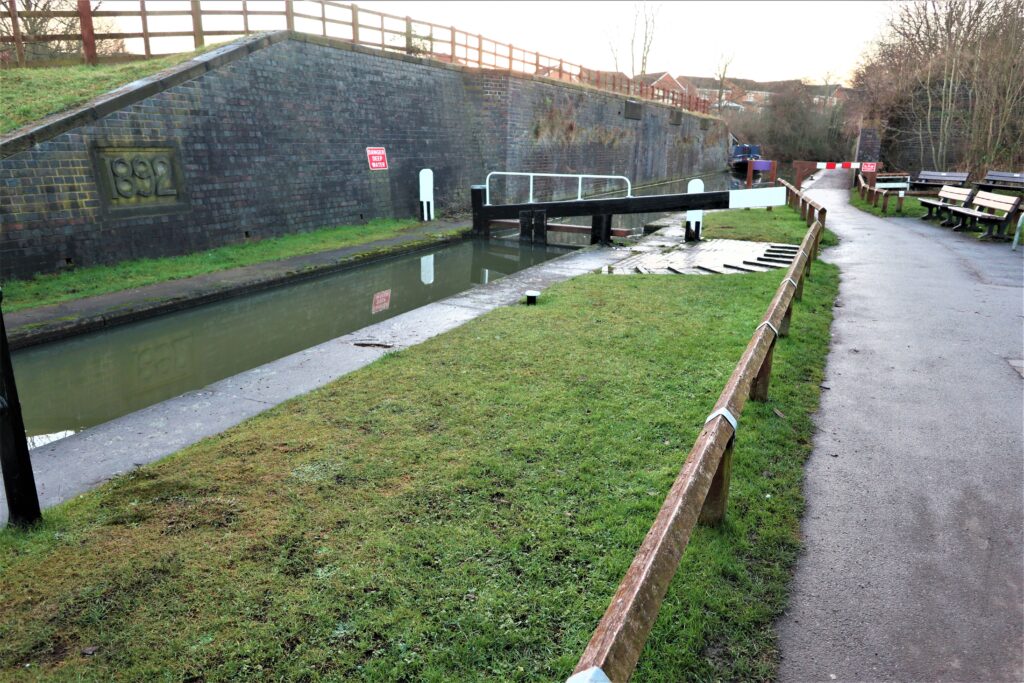
Next towards Staveley on the GCR Chesterfield Loop line was Staveley Works (for Barrow Hill) Station. This was carried over the Chesterfield canal on a bridge, in the area of the present Hollingwood Hub. Some of these embankments and their abutments still survive.
This wooden station building, like Chesterfield Central, also opened in 1892 and closed in early March 1963.
The 1892 datestone in a nearby wall was originally at the Chesterfield Tunnel entrance portal on Infirmary Road. It was rescued from storage by members of the Chesterfield Canal Trust.
Staveley Central Station (closed and demolished)
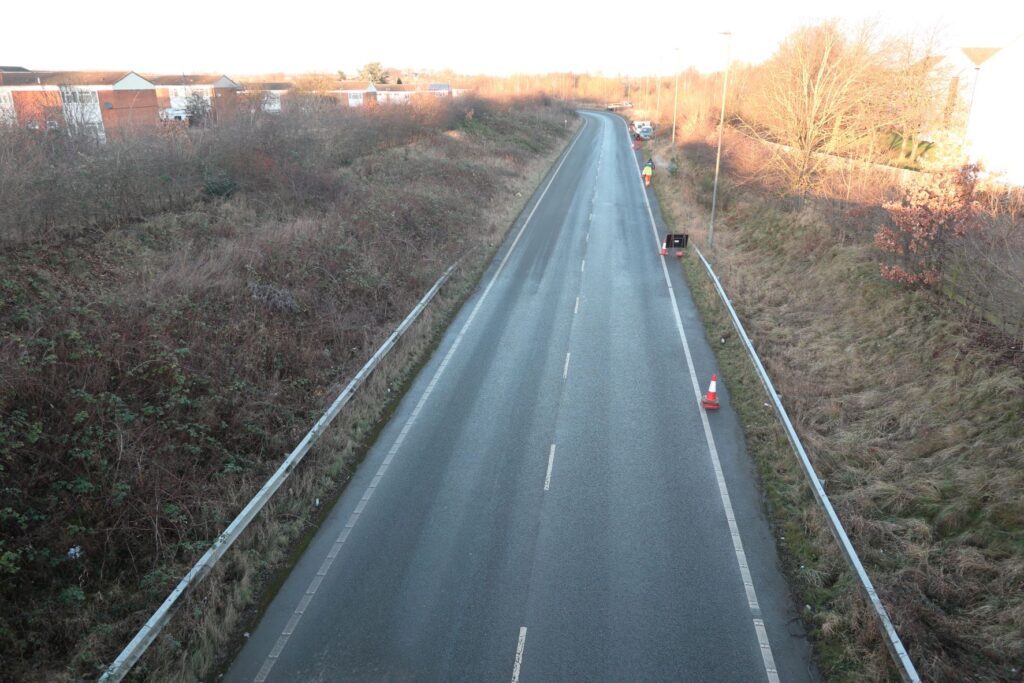
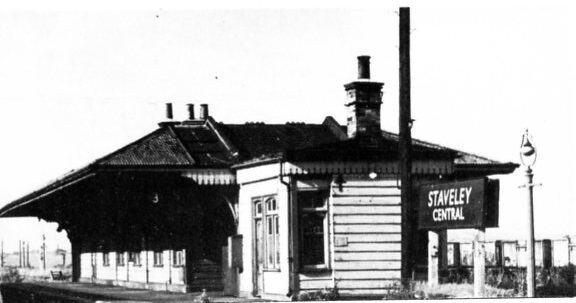
The GCR’s loop joined their mainline just south of Staveley Central Station. Situated at Lowgates this station is now the route of the A6192 Ireland Close.
Here were more wooden buildings, opening in 1892 and closing in early March 1963. Nearby was a large engine shed (closed 1966) and railway workers’ housing.
As the station at Staveley was on the mainline, trains travelled through it (but did not usually call) until 1966 – when services on the mainline were finally withdrawn. Indeed, freight carried on longer as the line was then used by coal trains to/from Arkwright Colliery.
Nearby the station was a once extensive goods yard with goods shed.
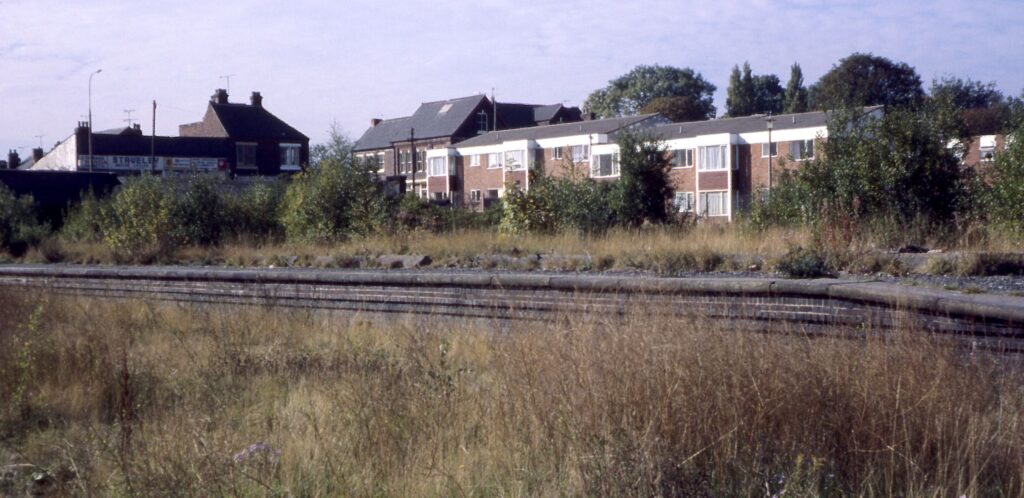
Staveley Town Station (closed – street level building survives)

A little further eastwards from the GCR’s station at Lowgates was the Midland Railway’s Staveley Town station, at Netherthorpe, opened in 1888 and closed in 1951, a road-side building, presumably the booking office, still survives on Fan Road.
The platforms were in a cutting behind and below this building. This was not a mainline station – the route ran to/from Mansfield and Chesterfield Midland station via Clowne.

Sheepbridge & Whittington Moor station (closed, street-level buildings survive)

When the Midland Railway opened their direct line from the still in business Chesterfield railway station to Sheffield in 1870, some local stations were also included. Sheepbridge and Whittington Moor station was just one of these.
The booking office still survives at street level, as does the station master’s house, painted white in this photograph. The station closed in 1967, but was used for engineering works diversions until 1975.
Barrow Hill and Whittington stations (both closed, both demolished)
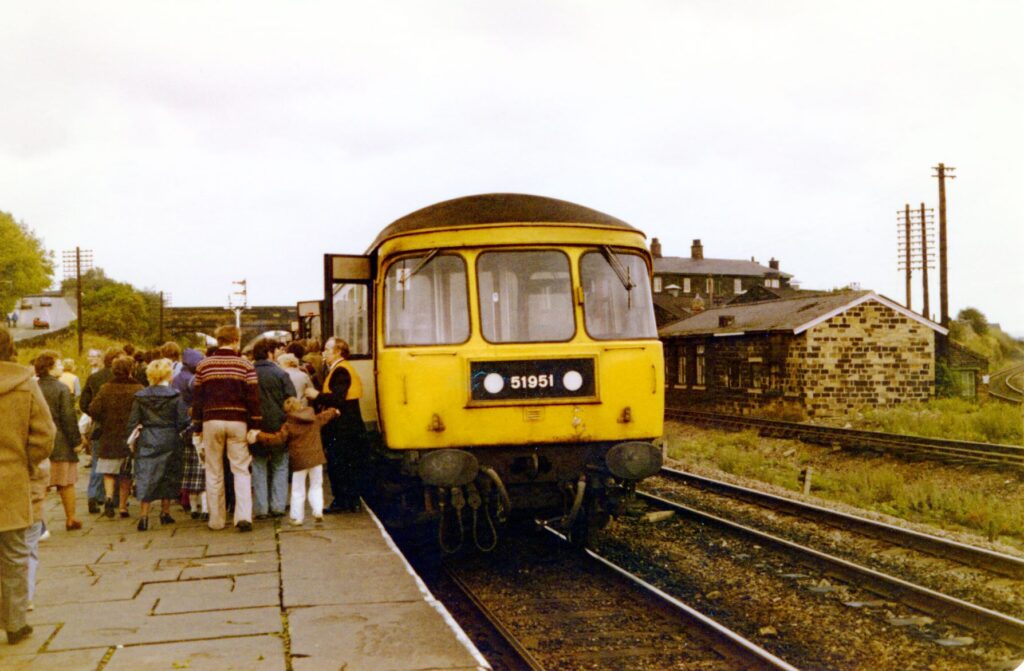

Until the Midland Railway constructed their direct line to Sheffield the city, as we have previously mentioned, was accessed via a line that went to Rotherham Masborough, opening in 1840 and constructed by the North Midland Railway. In the present Chesterfield borough were two stations situated on this line which both replaced much earlier ones.
Replacing an earlier structure, Barrow Hill station opened in 1888 and closed in 1954, though was used for trains to the nearby Barrow Hill railway roundhouse open days into the 1980s. This station is part of a bid to reopen the line to passengers. Today there is little in the way of remains, though it is possible to trace the lower part of the booking office wall which was situated nearly opposite the Barrow Hill Memorial Hall. The current Barrow Hill Roundhouse is situated nearby.
Whittington opened in 1873 and closed in 1952, but excursion trains still called until at least 1977. (There was an earlier station at Whittington, which had opened October 1861, closing when the 1873 station opened).
Names and renames and more about openings and closings
Most if not all of the stations we have covered in this blog would have carried another name or names at some stage. If you are interested in this aspect of railway station history or want more details about station opening and closing dates, we’d recommend you have a look at an on-line version of Michael Quick’s Railway Passenger Stations in Great Britain: a Chronology – The Railway & Canal Historical Society (rchs.org.uk).
This post was slightly edited on 21 December 2022, to make it clear that the second Midland station at Chesterfield was built around 200 yards north of the 1840 station. The picture of the 1870s Midland Railway station and a revised picture of Chesterfield Central Railway station (both from TP Wood’s Almanac for 1900) were added on 28 December 2022. A further edit was undertaken on 15 May 2023 adding a link to a post on the architect of the LDECR Market Place station and update the entry on Chesterfield (Midland) station, referring to a canopy refurbishment. On 25 July 2024 a further edit was made to the section on North Midland House confirming that masonry elements from the original 1840 Francis Thompson station were incorporated into that property.
